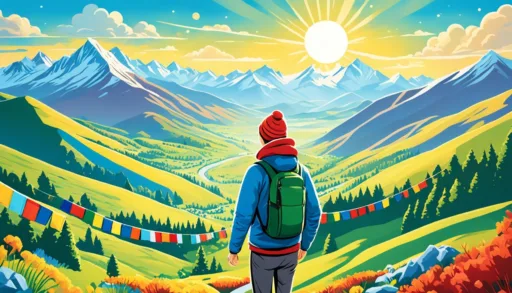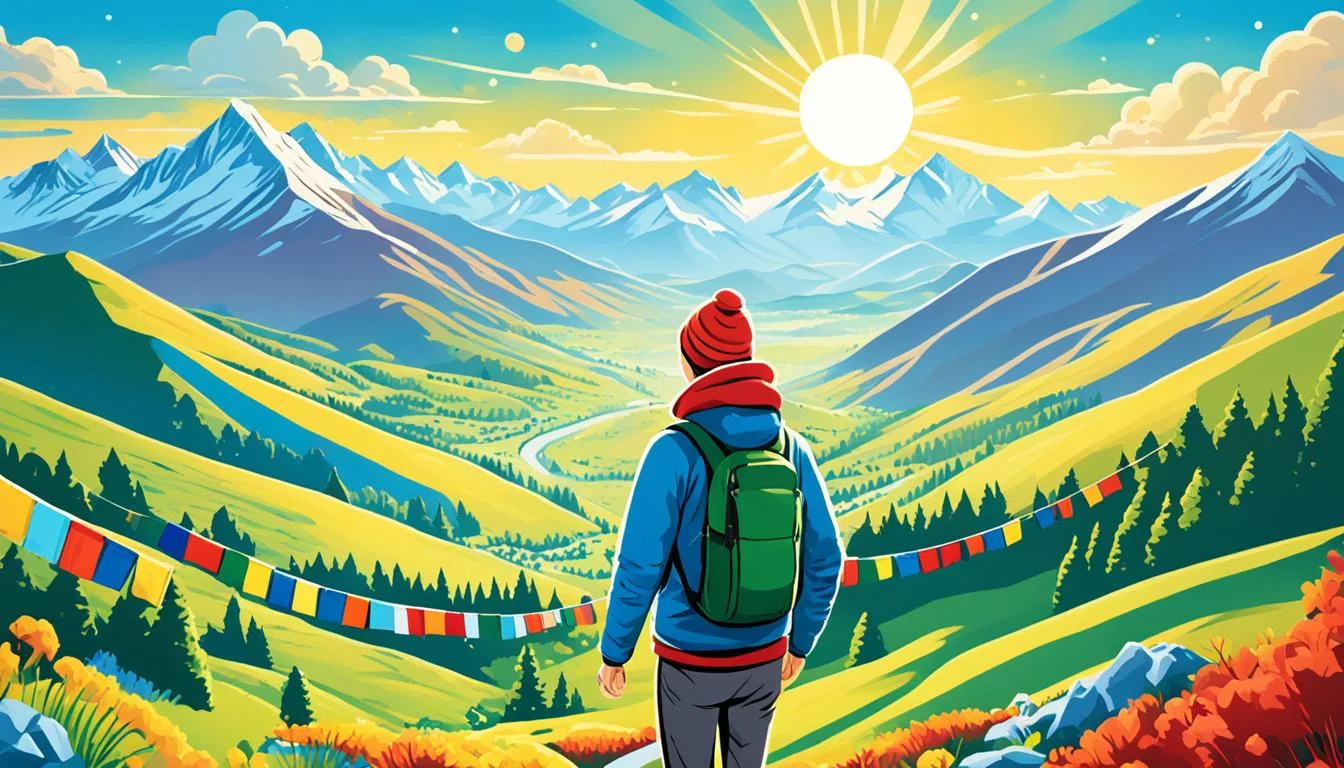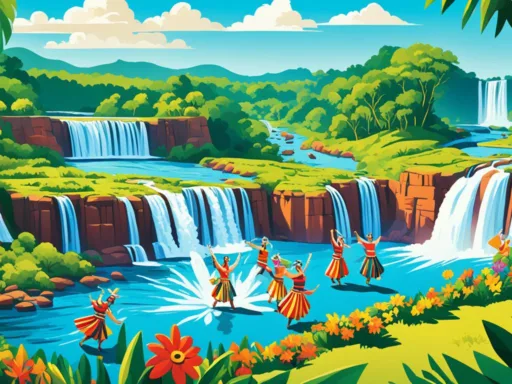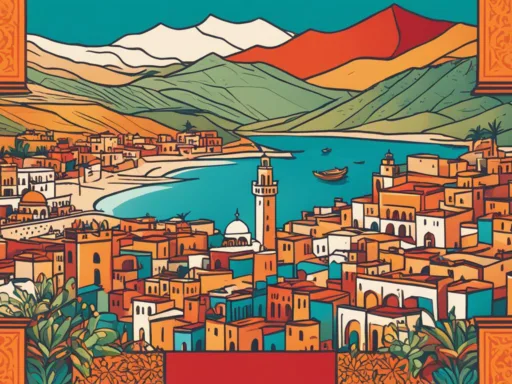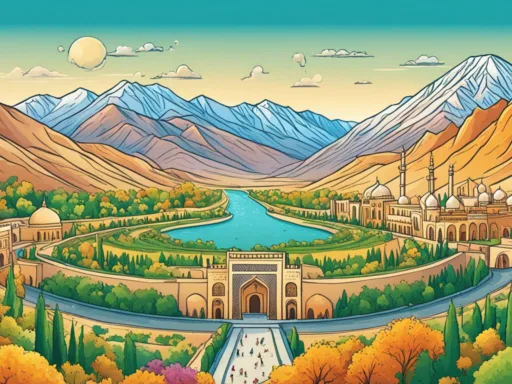Imagine a land where the mountains tell tales and the festivals dance in colorful cadence—a place seemingly locked in time yet brimming with life’s vibrancy. Bhutan, the world’s last great Himalayan kingdom, is a mystical place where culture and nature interweave in a tapestry of seasons. But when is the Best Time to Visit Bhutan? While this enchanting land beckons year-round, certain periods magnify its allure, offering the clearest skies, the most exuberant festivals, and the full spectacle of its natural beauty.
Drenched in the fresh air from October to December, with skies a boundless blue, Bhutan’s landscapes are at their most photogenic during this Peak Tourist Season. With the swath of spring’s warm caress, the valleys burst into a riot of colors, marking the Ideal Time to Visit Bhutan. Yet, Bhutan’s heart truly beats in its seasons, each crafting distinct memories for those who journey within its serene embrace. Explorers and seekers, alike, let’s decipher the ancient rhythms of the Weather in Bhutan and unveil the optimal orchestration of your Himalayan odyssey.
Key Takeaways
- The autumn months offer clear, sunny weather perfect for enjoying Bhutan’s scenic grandeur.
- Spring brings a delightful bloom, making it an excellent period for both trekking and experiencing cultural festivals.
- Witnessing Bhutan’s rare black-necked cranes is a winter spectacle in the Phobjikha Valley.
- The cooler winter months invite a quieter, yet equally beautiful, Bhutanese travel experience.
- Understanding Bhutan Travel Seasons is key to planning the trip of a lifetime.
Best Time to Visit Bhutan for Optimal Weather
As a country that boasts a striking range of biodiversity and climatic zones, pinpointing the best weather for a Bhutan trip hinges upon one’s personal preferences and the experiences one hopes to have. From flowering valleys to serene winter scenes, Bhutan’s dynamic weather patterns cater to adventurers, photographers, and culture enthusiasts alike.
Spring Bloom: March and April
For those seeking a color-splashed landscape under delightful temperatures, the months of March and April are ideal. An extravaganza of floral beauty unfolds across the nation’s terrain, inviting onlookers to a botanical enchantment underscored by the stunning rhododendrons and red silk cotton trees. This period is renowned not just for the splendid weather but for cultural festivities like the vibrant Paro tsechu, a testament to Bhutan’s rich traditions.
Autumn Splendor: September to November
If you’re contemplating off-peak travel to Bhutan, seeking solace amid the vivid beauty of high-altitude panoramas, autumn will captivate your senses. The air, tinged with a crisp freshness, clear skies, and a series of jubilant festivals, sets a spectacular stage for those eager to partake in Bhutan’s unique blend of natural and cultural escapades.
Winter Quietude: December to February
When the bustling crowds thin, a winter sojourn to Bhutan offers a serene and undisturbed experience. The colder months are synonymous with tranquil valleys drenched in sunshine, making it possible to enjoy clear views of the snow-smothered Himalayas. It’s a prime time for wildlife enthusiasts to visit destinations such as Gangtey and Phobjikha Valley, offering sightings of the rare black-necked cranes.
| Season | Characteristic | Ideal For |
|---|---|---|
| Spring | Floral landscapes, mild climate | Festivals, trekking, nature photography |
| Autumn | Clear skies, vibrant festivals | Cultural experiences, high-altitude treks |
| Winter | Sunlit valleys, snow-capped peaks | Wildlife watching, serene retreats |
Whether it’s the allure of spring’s vivacity, autumn’s clear skies, or the calm of winter’s embrace, Bhutan’s weather patterns contribute significantly to a fulfilling journey. Plan your visit during these key periods, and you’re likely to experience the best weather for your Bhutan trip, combined with the cultural richness and natural splendor that this Himalayan kingdom gracefully offers.
Understanding Bhutan’s Seasonal Climate Variations
Beckoning with its majestic landscape, Bhutan enchants travelers, but it is the Bhutan Travel Seasons that craft distinct experiences. The nation’s weather patterns are a dynamic symphony of elements painting each season with a different brushstroke. Monsoon months, spanning June to September, drape the topography in a vibrant green, with rains nourishing the biodiversity of the Himalayas. Despite the potential challenges such as visibility-obscuring mists and diligent leeches, this time of the year invites a celebration of lushness, echoing the abundance of alpine flora and a treasure trove of wild mushrooms.
It’s during the Weather in Bhutan monsoon that the Haa Valley transforms into a florid panorama, inviting those undeterred by the damp to witness a less-seen slice of the kingdom’s natural appeal. However, for travelers aiming to escape the tourist flux, Off-peak Travel Bhutan presents a symphony of advantages. The heightened rainfall gifts solo explorers and culture enthusiasts quieter moments, peppered across authentic local experiences and the undisturbed enjoyment of Bhutan’s ecological variety.
- Monsoon spells the bloom of alpine flowers and wild mushrooms.
- The lush season offers serene escapes for off-peak adventurers.
- Majestic views are often unique to this season with fewer crowds.
Should one venture to Bhutan outside the popular travel windows, the rewards are ripe with intimate encounters and perspectives on the kingdom’s land and heritage. As the rains replenish the earth and reach deep into the very soul of Bhutan, so too can the traveler immerse in a serene journey, enveloped by the monsoon’s nurturing embrace. Bhutan, a land of climatic intricacies, awaits those who seek the songs of its seasons.
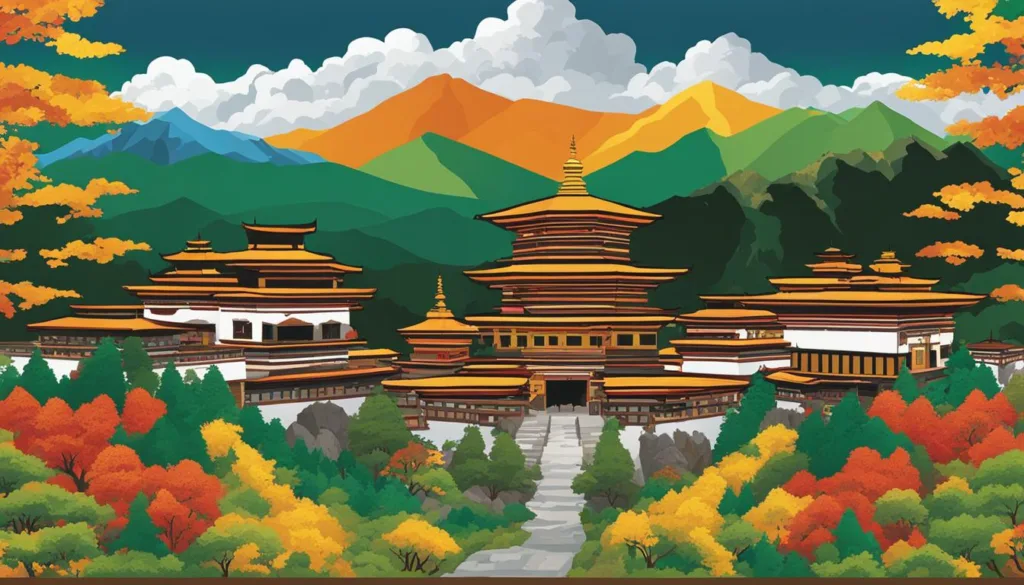
Aligning Your Visit with Bhutan’s Vibrant Festivals
As the Best Time to Visit Bhutan is often synonymous with the country’s lively cultural calendar, planning your trip during Bhutan’s festival seasons can offer a deeply immersive travel experience. Bhutan’s Festivals, with their spiritual significance and communal joy, are not just a window into the nation’s soul but are also vibrant spectacles that draw visitors from across the globe. Here’s how you can align your adventure with the rich traditions and celebrations throughout the Bhutan Travel Seasons.
Colorful Festivities in Spring
The spring season is marked by the celebrated Paro tsechu, a premier event in April that showcases Bhutan at its most festive. The jubilant atmosphere is replete with masked dances, traditional music, and locals donned in their finest attire, offering an unparalleled cultural feast for the senses.
Cultural Richness in Autumn
As leaves turn golden, the autumn air is filled with the rhythm of cultural richness. The unique Royal Highland Festival is a standout, merging traditional sports like archery with cultural showcases, including horse races and yak beauty contests. It’s a time when Bhutan’s deep-rooted traditions are on full display, making it a quintessential period for those intrigued by local customs and communal celebration.
Intimate Winter Celebrations
Winter may be less renowned for its festivals but offers intimate gems such as the Punakha Drubchen Festival. The crisp air carries the echoes of dramatized battles from bygone eras and the vibrant celebration of tsechus, providing a serene yet spirited experience for the handful of visitors braving the colder climate.
Choosing the 5 festival dates that align with your travel plans could well be the highlight of your Bhutanese adventure. Each season in Bhutan brings its own flavor of festivities, ensuring that any time is a great time to witness the heritage, spirituality, and community spirit that these celebrations foster.
Nature’s Best in Bhutan: Wildlife and Floral Wonders
Discovering the optimal periods for flora and fauna observation in Bhutan can be as enchanting as the kingdom itself. When one ponders the Best Time to Visit Bhutan for nature enthusiasts, spring and autumn unequivocally stand out as idyllic windows. Not only is the weather at its finest, these seasons offer a lush tapestry of verdant landscapes and an assembly of animals bustling in their natural habitat.
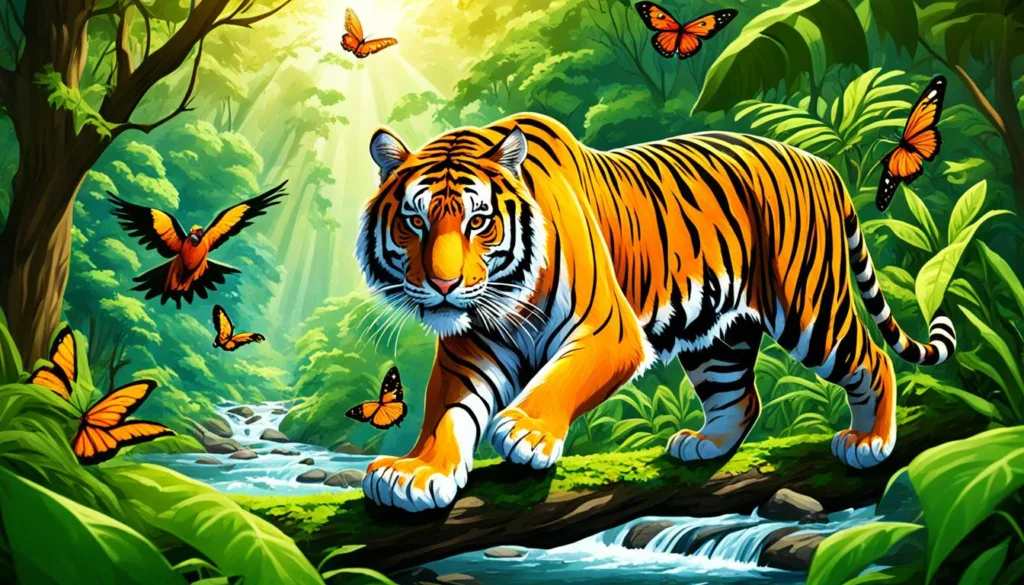
The Phobjikha Valley, a serene expanse in central Bhutan, is renowned for being the winter home of the enigmatic black-necked cranes. These majestic birds arrive typically between mid-November and March, creating a remarkable spectacle. Birdwatchers and wildlife aficionados regard this phenomenon as a must-see, crowning it as a pivotal experience during a Bhutanese adventure.
Additionally, the country’s riotous spring bloom brings forth a spectacle of colors. Bhutan’s national flower, the elusive blue poppy, and a myriad of other species make their exclusive appearances during the monsoon season, draping the mountains in vibrant hues. This time of year not only teems with botanical marvels but is also outside the usual tourist peaks, granting an Off-peak Travel Bhutan opportunity for tranquil communion with nature.
- Spring (March-May): Ideal for witnessing the grandeur of rhododendrons and magnolias in full bloom.
- Autumn (September-November): Offers clear, crisp views of Bhutan’s rich biodiversity as the foliage undergoes a mesmerizing transformation.
- Winter (December-February): A serene season to observe migratory birds and enjoy the subtler hues of Bhutan’s landscapes.
Whether you are an avid botanist, a wildlife photographer, or simply someone who finds solace in the wilderness, timing your visit with these natural events will amplify the magnificence of your journey. Bhutan’s wildlife, combined with its legendary floral kingdoms, provides an unparalleled experience into the heart of Himalayan biodiversity.
Conclusion
The journey to pinpoint the Best Time to Visit Bhutan is an intimate choice that varies from traveler to traveler. Whether you’re drawn by the Ideal Time to Visit Bhutan for its vibrant weather patterns, the rich tapestry of Bhutan’s Festivals, or the tranquil allure of Off-peak Travel Bhutan, each period offers a unique glimpse into the soul of this Himalayan sanctum. Spring ushers in a kaleidoscope of colors, as flora bursts forth in dazzling arrays, while autumn resonates with the heartbeat of cultural exuberance against the backdrop of the Himalayas. Winter wraps the kingdom in a hushed stillness, ripe with introspective beauty and rare wildlife spectacles.
For the nature enthusiast, an optimal visit may coincide with the spring bloom, where the air is alive with the flutter of petals and the dance of wildlife. In contrast, cultural connoisseurs might prefer autumn’s lineup of festivals, where Bhutanese tradition is in full, magnificent display. Yet, it is the understated charm of winter that calls to those seeking peaceful reflections amid mountains gilded with snow and the serene valleys of Phobjikha. It’s a time when the pace slows, inviting a deeper connection with the landscape and its inhabitants.
Ultimately, Bhutan’s seasons fold into one another like the intricate patterns of a Bhutanese textile, each thread essential to the complete picture. The Weather in Bhutan, unparalleled in its variety, serves as a canvas for the country’s natural and cultural grandiosity. For those planning a journey to this serene and storied land, every season bears its own fruits, ready for the picking. No matter when you choose to visit, Bhutan’s doors are open, welcoming adventurers into its embrace with the promise of an unforgettable experience.
FAQ
What is the ideal time to visit Bhutan for the best weather?
The best time to visit Bhutan for optimal weather is during the spring months of March and April or the autumn months from September to November. During these times, you’ll experience pleasant temperatures, clear skies, and minimal rainfall, making them excellent for sightseeing and trekking.
When is the peak tourist season in Bhutan?
The peak tourist seasons in Bhutan are spring and autumn, particularly from March to May and September to November. These periods coincide with the best weather conditions and several of Bhutan’s vibrant festivals, attracting the highest number of visitors.
Are there off-peak travel times in Bhutan when I can avoid crowds?
Yes, if you prefer to avoid crowds, consider visiting Bhutan during the off-peak months of December to February or during the monsoon season from June to August. During these periods, tourist numbers dwindle, and you can enjoy a more tranquil experience. However, be prepared for cooler weather in winter and heavy rains in the monsoon season.
What are the must-see festivals in Bhutan?
Bhutan is renowned for its unique and colorful festivals. Don’t miss the Paro tsechu in April and the Thimphu tsechu in September or October, where you can experience traditional masked dances and cultural celebrations. The autumn season also hosts the Royal Highland Festival, complete with traditional music and yak beauty contests.
When can I see the black-necked cranes in Bhutan?
If you’re keen to witness the black-necked cranes, visit the Phobjikha Valley from late October to mid-February. These rare and majestic birds migrate to Bhutan for the winter, offering a unique wildlife spectacle for nature enthusiasts.
What season is best for trekking in Bhutan?
For trekking, the best seasons are spring (March to May) and autumn (September to November). During these times, the weather is conducive to high-altitude treks with clear skies and good visibility. Additionally, the spring season offers treks through blooming rhododendrons and other flora, enhancing the scenic beauty.
When can I experience Bhutan’s natural floral beauty?
To experience Bhutan’s floral wonders, visit during the spring months, when the rhododendrons and red silk cotton trees are in full bloom. The monsoon period from June to September also sees a flourishing of alpine wildflowers, including the elusive national flower, the blue poppy.
Is Bhutan worth visiting in the winter?
Absolutely. Winter in Bhutan, from December to February, offers serene and clear landscapes. It’s an excellent time for photography and to experience the majestic Himalayas. Fewer tourists during this season mean you can have a more peaceful visit, although it’s important to be prepared for colder temperatures, especially in the mountains.
Are there any times of the year when Bhutan is less accessible due to weather?
Yes, during the monsoon season from June to September, heavy rainfall can cause road closures and make trekking trails challenging due to mud and leeches. It’s advisable to plan your trip outside of these months if you prefer to have more reliable access to Bhutan’s attractions.
Can I visit Bhutan outside of the recommended travel seasons?
You can visit Bhutan at any time of the year, but it’s important to align your expectations with the seasonal realities. For instance, if you visit during the monsoon season, be ready for a greener landscape but also rain and muddy conditions. Each season offers a distinct perspective of Bhutan’s beauty and cultural experiences.
